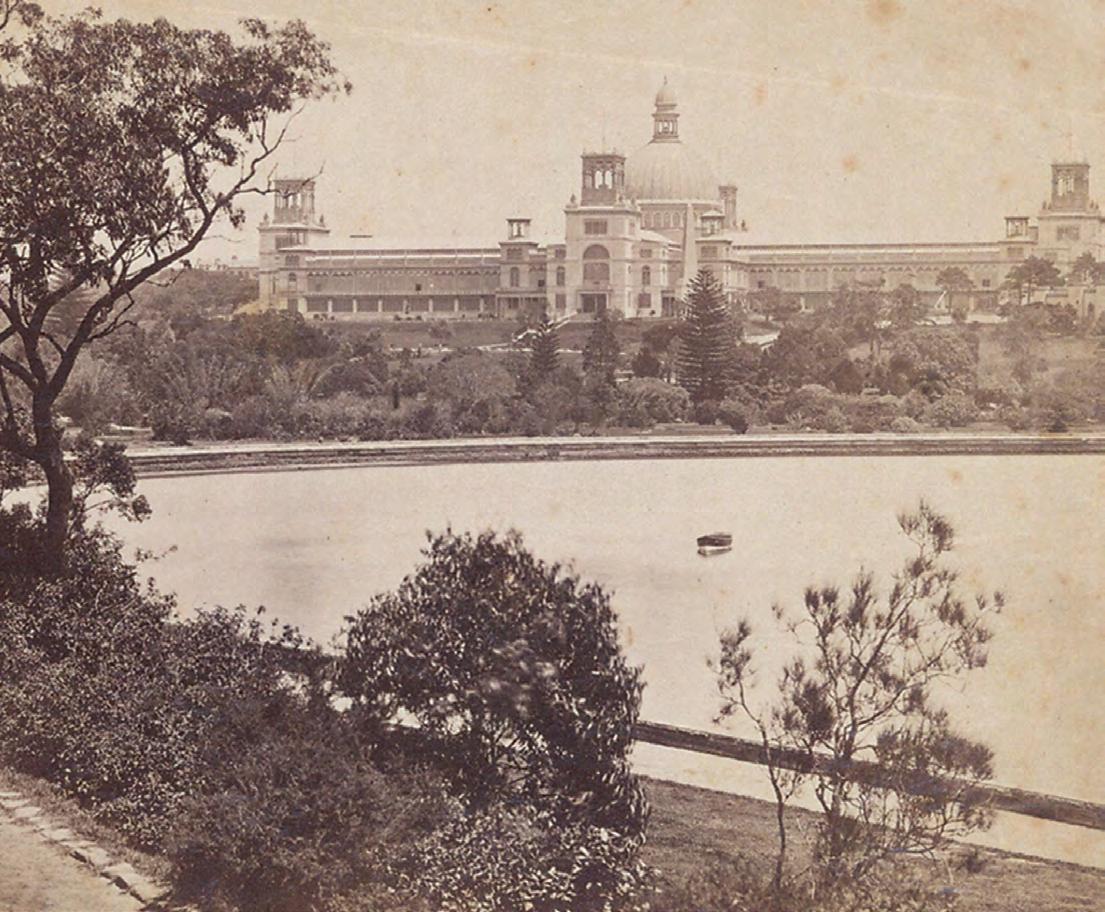
3 minute read
A botanical history
When walking through the Royal Botanic Garden, you immerse yourself in the wondrous diversity of plants from all over the world, admire the vistas of the harbour and cityscape through the lens of the greenspace and you can sense the history of the place. The Gardens have been here since the beginning of the colony.
At the Daniel Solander Library, we have a visual record of the gardens through time in our Historic Photographs Collection. Photographs that span the time from the 1850s through to the present day.
Advertisement
One of the earliest images is that of two women and a boy next to Victoria Lodge, looking westwards over Farm Cove. Though no date accompanies the photo, the crinoline dresses and the Lodge itself, which was built in 1865, give the answer. The photo also demonstrates the allure of the gardens as a place of visual and sensual enjoyment and as a social meeting place.
Photographs can also record historic events. One image shows a large family picnic around August 1908. How do we know the date? We were able to identify the ships in the background, one of which was the four-funnelled HMS Powerful, the flagship of the new Australian fleet which took part in the celebrations welcoming the arrival of the American ‘Great White Fleet’ (one ship of which can be seen to the left of HMS Powerful) which was visiting Sydney.
As well as capturing historic events, photographs can chronicle buildings which no longer exist. In November 1879, the Sydney International Exhibition began, which utilised much of the Gardens and Domain. Its centrepiece was the Garden Palace, an enormous building which was constructed in eight months, built almost completely of timber and having the distinction of being the first construction in Sydney fitted with electrical wiring and lighting. The photograph dramatically puts the Garden Palace into perspective with the environment around it. Just to the left and slightly below the Palace is Government House and beneath that, Fort Macquarie (on whose site the later Opera House is now located) with its foreshore filled with crowds. Both structures are dwarfed by the Palace.
Sadly the Garden Palace burned down in 1882. At the time the investigations could not ascertain the cause of the fire and this mystery fuelled many urban myths; the Palace was burned down to hide the convict origins of certain old Sydney families, or that it interfered with the harbour views of citizens living on Macquarie Street. It is more likely, rather than these fanciful tales, that the electrical wiring and the largely timber construction of the Palace were the primary causes. Today the Garden Palace is only a memory, survived by a handful of artefacts and the Sunken Garden whose position marks the centre of the great dome.

Coinciding with the International Exhibition, the Director of the Gardens at the time, Charles Moore, had constructed a building in 1878, housing a lecture hall and museum of economic botany. The Museum cost over 1,000 pounds and housed a large collection of some 800 botanical specimens. It later expanded in 1899 with the enlargement of the original building to house a Herbarium. The Museum came to boast 7,000 items including botanical specimens mounted on paper and in spirits, timber, nuts, seeds, educational models of plants, posters, framed illustrations and portraits of botanists and botanical curios ranging from frankincense and myrrh to the large seeds of the Coco de Mere. As with many Victorian era museums, the Museum shown in the photograph looks cluttered to us today but was visited by thousands of people every year until it closed in 1941.
Another interesting – but no longer seen – structure located in the Domain, just above Mrs Macquarie's Chair is the Masked Battery. It was erected in 1856, along with Fort Denison, around the time of the Crimean War (18531856) as a response to the fears of Russian invasion. It was equipped with eight artillery pieces and these were arranged above and behind Mrs. Macquarie's Chair. The Battery was composed of a rammed earth and concrete defilade (wall) fitted with embrasures. It was commonly referred to as ‘the little fort’. By 1870, the concern over foreign invasion had all but dissipated, the antiquated guns removed and the whole structure buried. The site was uncovered in the 1980s for archaeological study and once again buried, in order to keep it safe from vandalism and erosion. Today, covered by a hillock grass, no sign of it remains.
You can support the Daniel Solander Library by donating to our end-of-financial-year appeal. See the back page for more information.










